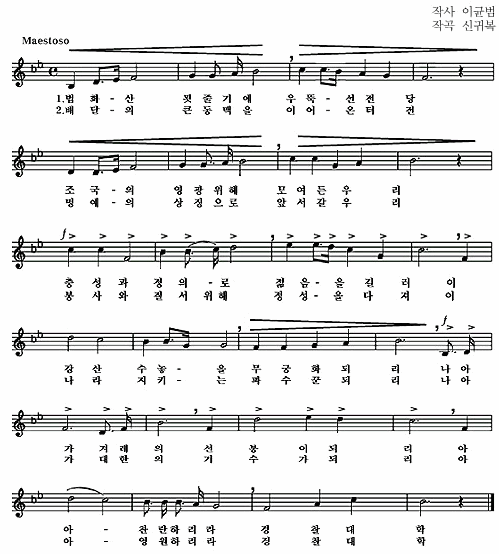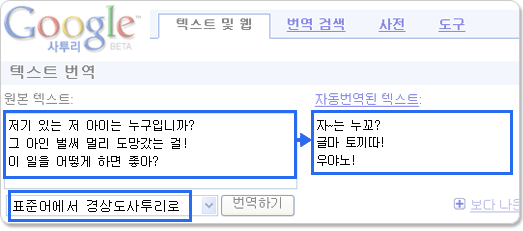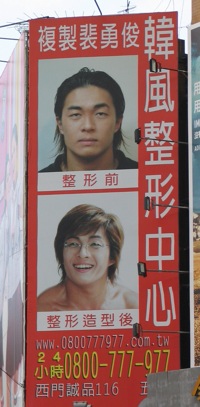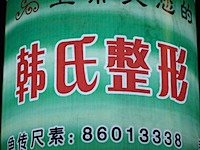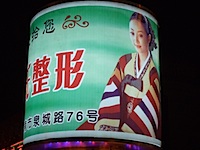Evidence continues to mount of, “a carefully coordinated action plan among Japanese officials and ministries to claim territorial rights over the islets” of Dokdo.
Last week’s breathtaking revelation that new middle school teaching guidelines in Japan will include the phrase, “It is necessary to deepen understanding about our country’s territory in a way identical with the Kuril Islands by mentioning that there exist differing assertions between our country and Korea over Takeshima,” amounts to a provocation which provides the Republic of Korea with a clear casus belli.
However, this is only the beginning. In addition to a stealth campaign which is surely behind such outrages as the Library of Congress proposal to adopt the so-called “neutral” term “Liancourt Rocks” there have been a full range of suspicious activities which provide plentiful proof of a perfidious plot by the Japanese.
Revenge of a Japanese Villain
According to a recently declassified US military report found in the National Archives a Japanese youth of around twenty years of age, Tsuji Shintaro, was fishing near the Korean islands of Dokdo in early spring of 1948 when his boat was sunk during a US bombing run in the area during training. He was saved by a nearby Korean who collected seaweed along the coastline. However, the two fought when Tsuji claimed the islands were Japanese territory and, badly beaten by the naturally physically stronger Korean, the Japanese fisherman swore that he would someday get revenge.
Tsuji, who went on to found the Sanrio corporation, is ready to seek vengeance. The popular Hello Kitty character, which is famous for its mysterious lack of a mouth may soon undergo a startling change. As Sanrio spokesman put it in a special press conference last Wednesday, “Sanrio Chairman Tsuji feels that it is time for Hello Kitty’s long silence to come to an end. She must speak the truth about Takeshima, and we are confident that the world will listen.” The addition of a mouth to the Hello Kitty character is to happen sometime before Christmas sales for 2008 set in and many Hello Kitty products will play Takeshima related quotes by the character at random times, according to a Sanrio employee who asked not to be identified. Hearing this news, one excited Japanese fan reported, “The people of Japan, and of the world, have never heard the true voice of Hello Kitty, so we are all looking forward to this.” There are some reports that the first sound of Hello Kitty’s voice can be heard all over Japan through a special radio broadcast at noon on August 15th.
A Bamboo Plot
Oil prices and food grains are not the only products rising in price these days. Market observers and bamboo nursery owners have recently reported an unprecedented 670% rise in the price of bamboo seeds as well as full-grown stock of bamboo over the last 6 months. Jeffrey Haskins, associate editor of the San Francisco based Bamboo Quarterly was alarmed enough to explore what he called, “This clear distortion of the market.” Haskins had no idea that he would stumble upon a Japanese nationalist plot, “Those I approached either refused to speak to me or else warned me that, for my own safety, I ought best drop this entirely.”
After meeting considerable resistance at every step Haskins was finally able to tie up with Kaneyama Chiyo (金山ちよ), a student reporter for the Hitotsubashi Youth Red Flag Journal (一橋赤旗青年ジャーナル). Together they were finally able to identify the true source of the huge purchases of bamboo: an until now largely unknown organization going by the name of, “The New Bamboo Shoot Tribe” (新竹の子族). This insidious group of right-wing nationalist thugs is said to have close ties to Japanese organized crime syndicates and operates out of unmarked headquarters found somewhere in or near an apartment complex called the Harajuku Verdant Heights. In interviews with local residents Kaneyama reported that members of this organization have been seen to hold secret night time rallies in Yoyogi Park dressed in strange attire. They apparently open with a bizarre oath to the memory of former Japanese ruler Toyotomi Hideyoshi and have been heard chanting various anti-Korean slogans.
Very little is known about the leader of the New Bamboo Shoot Tribe and her life is largely shrouded in mystery. What is known about Mitarai Aya (御手洗彩) is that she has a long history of violence and gang involvement. First detained by police in 1980 for destruction of public school property, she is said to have led many mass battles between groups of high school students in central Tokyo. She was eventually expelled from high school when she stabbed her math teacher 14 times with a geometry compass in 1982. One year later she was arrested for the death of two Yakuza men found with brutally cracked skulls near Meiji shrine. The charges were dropped after she argued that she had been molested by the older men, who were found still armed with knives, and in response she had to “bust some heads,” in “self-defense.”
A single rare picture remains of a young Mitarai taken some time in the early 1980s. We can already see in her eyes the early indications of someone who would become a cool and cruel Japanese right-wing nationalist fanatic:
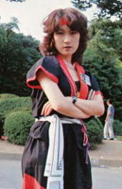
The research of Kaneyama and Haskins definitely established the New Bamboo Shoot Tribe as the source of the massive purchases. This has affected prices not only of the popular Phyllostachys bambusoides and other varieties of bamboo common in Japan but a wide range of East Asian species such as Fargesia dracocephala. However, a follow up article slated to be published in Asahi newspaper which was to analyze the organization and its plans for the bamboo was never submitted. Soon after the initial joint publication of the research by these two courageous reporters Haskins left suddenly and mysteriously for Patagonia in southern Argentina to reportedly “find God,” leaving all his belongings and his wife and two children behind in California. Efforts to locate him have been unsuccessful. More shockingly, Kaneyama died soon after in a mysterious fire in a restaurant in the Ōkubo district of Tokyo.
The impact of this price rise should not be underestimated, as it even threatens the Beijing Olympics held in China this summer. The cost of feeding pandas, who depend on the plant, has skyrocketed and rationing of bamboo shoots has been implemented in China and elsewhere. According to panda specialist, Dr. Zhang Zhongxu at the Chengdu Panda Breeding and Feeding Center, “The Japanese have long been jealous of the prestige China will gain this summer with the hosting of the Olympic games. This manipulation of the bamboo market is a direct provocation aimed at sabotaging the games. We can now only afford to feed each of our pandas 4kg of bamboo shoots per day, and our beloved pandas are in dire condition.” One of those threatened and at the point of starvation is none other than Jingjing, one of the five mascots of the Olympics beloved all over the world.
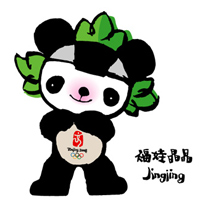
A national campaign has been announced to raise money to feed Jingjing and other starving pandas in the wake of the crisis. However, in the event Jingjing does not pull through, there is discussion about the possibility of substituting the cartoon mascot for the Shenzhen based Internet Friendly Monitoring Division of the Public Caring Bureau, which coincidently is also named Jingjing.
While not as cute as the panda figure, the alternate Jingjing has gained much respect for his considerable mastery of a wide range of Chinese martial arts. He easily won the underground 2007 Worldwide Battle of the Mascots held in the Cambodian border town of Pailin, unseating the 3-year consecutive Japanese champion Custom-kun (カスタム君) whose Sumo skills were thought to be unbeatable.
The sentiment stirred in the Middle Kingdom surrounding the bamboo price increase, however, may have distracted the media away from the real purpose behind the massive purchases of bamboo by dummy corporations set up by the New Bamboo Shoot Tribe. While it hasn’t received much international attention, a short “Research Note” in the forthcoming issue of the International Irredentist Review ties the Kaneyama and Haskins research directly to the Dokdo issue. Professor Kjell Skadberg, head of the Institute of Irredentist Studies at the University of Flekkefjord and author of highly controversial and much criticized work Dokdo/Takeshima and Eastern Greenland: What We Can Learn from the 1931 Norwegian Invasion and Occupation of Eirik Raudes Land has suggested that this massive purchase of bamboo may be part of a new and more frightening stage of Japanese imperialist attempts to boost their international claim to the Dokdo islands through direct action.
“The New Bamboo Shoot Tribe, which must surely have government support to be engaging in such massive purchases, may be planning to somehow cover the contested islands in bamboo. If they could get this normally tropical plant to grow on the rocky surface and cover it with the verdant green of the bamboo (or take) which is part of the Japanese name for the islands, then it would serve as excellent ammunition for the Japanese claims. The equivalent would be if Koreans were to ship all the lonely people of their nation to the islands of that designation.”
Could this be the ultimate bamboo conspiracy? Activists have already mobilized to pursue this hypothesis. The first support for Skadberg’s claim has already been found. After Kaneyama’s suspicious death in March, a close review of her possessions turned up three single sheets from a longer roster of the paying members of the New Bamboo Shoot Tribe from 2006. This list included 2 pilots of major Japanese airlines as well as a retired Japanese self-defense air force pilot of high rank. Among them was also an assistant professor of the Department of Agriculture at Mie University, Saito Jun, whose past publications include an essay entitled, “From Tropical Soils to Rocky Wastelands: Increasing the Range and Promoting the Growth of Plants in Adverse Conditions.” Activists have already begun surveillance of these individuals but they have all refused requests for interview or comment.
Fishy Relations
As seen above Skadberg suggests that there is secret Japanese government financial backing behind the conspiratorial designs of the New Bamboo Shoot Tribe. This is undoubtedly the case, but there are other possibilities for funding that go beyond government support and the deep blood chests of Japanese nationalist networks. In an amazing scoop, one more name found on “The Kaneyama Roster,” as the membership roster found in deceased Kaneyama’s possessions has come to be known, suggests a connection between Japan’s neo-imperialists and Korea’s huge network of Dokdo seafood restaurants, which goes by the name Dokdo Marine Products Industry Federation (독도해산물산업연맹, hereafter DMPIF). The list contained the Korean name Choe Sangho (崔尙浩) which is the same name as the DMPIF’s long-serving former chairman (1985-1997) well known for leading the expansion of DMPIF membership by encouraging all failing seafood restaurants in Korea to paint images of Dokdo on their interior walls, add Dokdo to the restaurant name and put pictures of the islands on menus or on the outer walls and signs. Before becoming chairman, Choe was merely the humble owner of his own restaurant in Shinchon, “Dokdo Tuna” and was only inspired to become active in the DMPIF when his wife one day reportedly remarked, “Wouldn’t it be nice if every station on the new line number two had a Dokdo restaurant?”
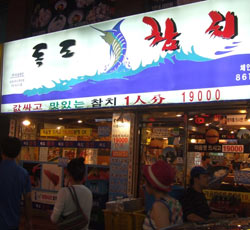
This would become the campaign theme for the DMPIF barely a year after the completion of subway line number two in 1984, ten years after violent protests against the “pro-Japanese subway” (친일지하철 반대운동, 1973-1975) line number one opened: “A Dokdo seafood restaurant at every station of line number two! Celebrate the completion of our first pure Korean subway line!” With the patronage of patriotic customers and new support of restaurant owners Dokdo-themed restaurants spread like wildfire across South Korea during Choe’s tenure as chairman, with membership in the federation growing from a mere 24 restaurants in 1985 to 432 in 1996. On the eve of the current scandal, member restaurants were said to be over seven hundred.
However, now Choe’s legendary status among students of Korea’s seafood history was being seriously questioned. Was he a selfless patriot who fought for Dokdo through his career as a seafood restaurant owner and chairman of the DMPIF? Or was he perhaps secretly an opportunistic pro-Japanese traitor who actually conspired together with Japanese extremists to deprive Korea of these sacred islands?
Choe naturally dismissed all suggestions that he had anything to do with the New Bamboo Shoots Tribe or other Japanese nationalist organizations. In a short comment given to the press through a spokesman he said, “I have dedicated my life to educating the people about Dokdo and make sure that with every delicious bite of our food they are reminded of the beauty and sanctity of the islands. Dokdo is our land! I am horribly saddened to hear that someone going by the same name as me was found on the roster of this despicable organization.” However, shortly after the statement was delivered he was committed to a “health spa” on Cheju island due to “illness and stress” and has since refused to see anyone. The DMPIF immediately began damage control, quickly distancing themselves from Choe in a press release and emphasizing that, “Choe has not served on any executive body of the DMPIF since 2001 and we are currently conducting an internal audit to investigate possible charges of corruption against him from his time as chairman.”
However, Choe’s potentially treasonous activities sparked the interest of the Korean Institute for Research in Collaborationist Activities (민족문제연구소) who decided to take a look at the leadership of the DMPIF. Fresh from their hard work on the newest release of names of leading colonial period collaborators, they conducted a detailed study of all leading executives of the DMPIF from its founding in 1965 until now. The disturbing conclusions reached by their researchers can be found in the concluding paragraph of their damning 622 page report:
“Of the 78 members holding executive positions in the history of the DMPIF no less than 59, including Choe Sangho are direct descendants of colonial period pro-Japanese traitors. An additional 6 executive leaders of the DMPIF in the 1960s were themselves already in our most recent list of 4,776 traitors. We must therefore conclude that the DMPIF is a pro-Japanese collaborationist organization and will be including the organization in the upcoming release of the post-liberation edition of our dictionary of pro-Japanese collaborationist organizations (일제협력단체사전: 국내 해방후 일제잔재편).
The reaction was swift and severe. Last week a statue of Choe Sangho that had been erected at the opening of the fish market in Noryangjin in 1999 to commemorate his lifetime dedication to the preservation of Dokdo was torn down by angry protesters. More peaceful candlelight vigils were held outside the DMPIF demanding the dissolution of the organization.
Many Koreans were left shocked and confused. Scenes of crying children whose parents denied them the pleasure of visiting their favorite local Dokdo restaurant became commonplace. The very restaurants that helped promote the Korean claim to Dokdo long before children sang the Dokdo song in school were somehow also connected to Japanese terrorists who were trying to steal the islands from them? How could this happen? The scholarly investigations of the Korean Institute for Research in Collaborationist Activities were followed up upon on by another powerful non-profit organization dedicated to the global fight against Japanese neo-imperialism: VANK.
The Very Annoyed Network of Koreans, or VANK, set out to identify the motives and the exact trail of money and meetings that linked the DMPIF with Japanese organizations. First their volunteers infiltrated the mid-tier cells of the DMPIF and recorded a number of revealing conversations that showed the base opportunism at the heart of the DMPIF’s treasonous crimes. The following example gives the clearest voice to this treachery:
DMPIF Traitor: Business was at its peak during the furor surrounding the establishment of ‘Takeshima Day’ in Shimane [Prefecture, Japan] and the issue of the Takeshima stamps a few years ago. However, since then people have gradually forgotten about Dokdo and business has been in steep decline. All people care about now is eating Korean beef! We have to get Dokdo back into the news and for that we need to work together with the Japanese, who have that ability.
VANK Infiltrator: But what if Japan succeeds in its campaign to steal Dokdo from us?
DMPIF Traitor: [Laughing] That would be perfect! Recovering the islands from Japan would become a permanent obsession of all Koreans! Our restaurants would flourish!
There is a sick and twisted logic to the traitor’s comment. Who now remembers the once insanely popular restaurants of pre-WWII France that served Alsatian cuisine and incorporated the word “revanche” in their names or on their menus? If Dokdo were lost, the spirit of revanche would surely lead to a new renaissance for the DMPIF, had their plot not been uncovered. Thanks to the dedicated efforts of VANK members, fired with passionate zeal and love for their nation, massive financial contributions by the DMPIF to a “bamboo fund” and other Japanese plots have been uncovered. Yesterday, the farcical attempt of DMPIF to prevent the scandal from coming out came to an end when the entire executive board of the federation fled to Tsushima island and sought political asylum from the Japanese authorities, who still forcefully occupy the Korean island, properly known as Daemado. “When Korea rightfully reclaims Daemado,” said a spokesman from VANK, “these traitors will receive their just punishment.”
One major battle to thwart the current Japanese attempt to steal Dokdo from Korea has been won but Koreans must remain vigilant. The fight continues, with ever increasing efficacy. Seoul Metro has pulled Japanese condom ads found on subway doors and special crack troops have successfully apprehended and liquidated a flock of pro-Japanese Korean pheasants. Let no Korean man, woman, or child ever forget that Dokdo is and has always been their land!




